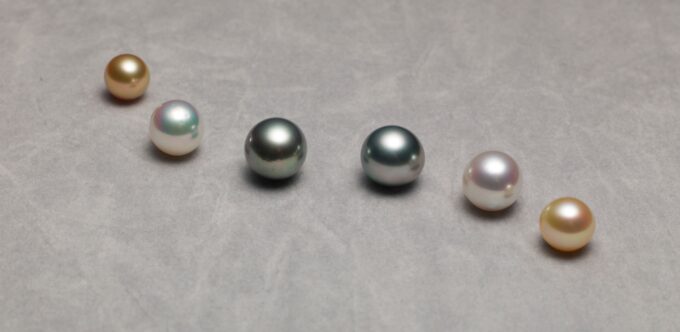The Intriguing Process of Cultured Pearl Formation

Introduction
Pearls, often referred to as gems of the sea, are timeless and elegant, admired for their lustrous beauty. While natural pearls have been cherished for centuries, their rarity and high cost have made them inaccessible to many. Enter cultured pearls, an innovation that has revolutionized the pearl industry and made these treasures more available to the masses. In this blog post, we’ll delve into the fascinating world of cultured pearls, exploring their history, the process of creating them, and the various types available today.
The History of Cultured Pearls
Cultured pearls were first developed in the early 20th century, when Japanese researchers Kokichi Mikimoto, Tokichi Nishikawa, and Tatsuhei Mise independently discovered techniques for cultivating pearls. Mikimoto, often credited as the father of modern cultured pearls, successfully created a semi-spherical pearl in 1893 and later patented the technique in 1916. The advent of cultured pearls revolutionized the pearl industry by producing pearls in a more controlled, sustainable, and cost-effective manner.

The Process of Cultivating Pearls
Cultured pearls are created by introducing a foreign object, known as a nucleus, into a mollusk (usually an oyster or mussel), prompting the mollusk to secrete a substance called nacre as a defense mechanism. The mollusk then coats the nucleus with layers of nacre, ultimately forming a pearl. The process typically involves the following steps:
- Selection of mollusks: Healthy mollusks are selected based on factors such as species, age, and size to ensure optimal pearl production.
- Nucleus insertion: A skilled technician, known as a nucleator, inserts a nucleus (usually made of shell beads) and a small piece of mantle tissue from a donor mollusk into the host mollusk. The mantle tissue contains cells that help initiate the nacre secretion process.
- Recovery period: The mollusks are returned to the water, where they recover from the nucleation process and begin secreting nacre.
- Nacre deposition: The mollusks are kept in a controlled environment for several months to several years, depending on the desired size and quality of the pearls. During this time, the mollusks deposit layers of nacre around the nucleus.
- Harvesting: The pearls are carefully removed from the mollusks, cleaned, and sorted by size, shape, color, and luster.
The Different Types of Cultured Pearls
There are several types of cultured pearls, each with its unique characteristics:
- Akoya pearls: These pearls are produced by the Pinctada fucata oyster, primarily in Japan and China. They are renowned for their exceptional luster and typically range from white to cream in color, with hints of pink, silver, or gold.
- South Sea pearls: Produced by the Pinctada maximaoyster, South Sea pearls are cultivated in the waters of Australia, Indonesia, and the Philippines. They are larger than most other pearls and come in a variety of colors, including white, silver, gold, and blue.
- Tahitian pearls: Cultivated in French Polynesia using the Pinctada margaritifera oyster, Tahitian pearls are known for their striking colors, which range from dark gray to black, with overtones of green, blue, and purple.
- Freshwater pearls: These pearls are primarily produced by freshwater mussels in China, although they are also cultivated in the United States and Japan. Freshwater pearls come in a wide range of shapes, sizes, and colors, from white and pastel hues to vibrant peacock shades.

The Future of Pearl Culturing
As the demand for pearls continues to grow, so does the need for sustainable and innovative pearl cultivation methods. Researchers are constantly seeking ways to improve the quality, size, and variety of cultured pearls, while minimizing the environmental impact of the cultivation process. The cultured pearl industry is a testament to human ingenuity, demonstrating how we can harness the wonders of nature to create beautiful, accessible treasures for all to enjoy.